-
 The Power of Custom Suits: Enhance Credibility in the Legal Sector
The Power of Custom Suits: Enhance Credibility in the Legal SectorIn the legal world, how you dress can make a big difference. Your outfit can shape how clients see you, earn respect from colleagues, and even impact the success of your cases. Dressing well shows that you're professional, capable, and confident. It’s more than just clothes—it’s about sending the right message to everyone around you. So, we are going to find the best suit for a lawyer.
Let’s break down how custom formal wear can elevate your presence in the legal world.
The Importance of First Impressions in the Legal World
In the legal world, the first impression goes a long way. Litigants, judicial officers, and even the other party to the case will make snap decisions based on looks. A good custom suit gives you a head start. It reflects your seriousness towards your profession.
When you are walking into a courtroom, a custom suit gives you that professional feel and sets you apart. This act builds confidence not only for your clients but also for your fellow colleagues. Also, wearing a perfectly fitting suit also underlines professionalism, which may affect the reception of your arguments. This is a principle that is very well understood in law. You do not have the opportunity to make the first impression twice.
Custom Suits: Tailored Fit for a Confident Presence
A custom suit not only fits your body perfectly, but also enhances your confidence in high-pressure courtrooms. For instance, a lawyer who wears a tailored suit stands more erect, feels more in control, and projects authority. The snug fit gets rid of distractions, which helps the wearer to concentrate on the task at hand. This psychological lift is essential in situations where every detail is important, guaranteeing a confident, sharp persona that stays in memory.
Lawyer Suits for Women

Lawyer suits for women are made to harmonize professionalism with comfort. The custom made women’s wear generally features tailored blazers matched with either skirts or pants, which provides flexibility in the style. Durability and a polished look make wool and cotton blend the preferred choice for high-quality fabrics. A lot of suits also contain subtle design features such as slim lapels or structured shoulders, which can boost confidence in the courtroom. Navy, black, or gray suits are fit for female lawyers to maintain a professional and authoritative appearance.
Lawyer Suits for Men

The emphasis of lawyer suits for men is on well-tailored designs that are timeless. Double-breasted or single-breasted blazers are frequently designed to be paired with classic trousers that give a sleek look. Wool or polyester blends provide a durable and professional look that lasts for a long time. Generally, men choose colors such as dark navy, charcoal, or black for a serious, sophisticated look. A male lawyer’s professional look is completed with a well-fitted suit and simple, understated accessories, such as ties and pocket squares.
Customized Features: Attention to Detail
Customized features in suits reflect the attention to detail often required in legal work. Starting with the custom-built fits to the lapels sewn by hand, one sees huge attention to detail—an important trait in a lawyer. Other additional options include adding initials on the product or choosing materials for the liner that make it stand out. Such aspects increase confidence while at the same time giving the care and precision that a legal professional brings to their cases.
Quality Materials: Enhancing the Value
In the legal sector, high-end custom suits made from quality materials like wool or cashmere convey professionalism and success. For example, a well-tailored suit in a rich navy fabric not only looks impressive but also instills confidence in clients. Fabrics such as fine linen or silk blends enhance comfort and durability, reinforcing the notion of reliability. When lawyers wear these suits, they project authority and trustworthiness, making clients more likely to feel secure in their legal representation.
Building a Unique Style
Bespoke suits allow legal professionals the chance to express individuality while at work. For example, a navy blue suit business with very fine pinstripes passionately demonstrates confidence and authority. A pocket square and a tie create a particular kind of image associated with competence. This unique style and attention to detail aids make the best suit for a lawyer with a touch of trust and respect.
Custom Suits as an Investment in Career Growth
Custom Suits presents a smart strategy to advance your legal career. The right suit makes you feel good about yourself. It also creates a professional image that is tempting for clients. This investment opens up new business opportunities and networking advantages. It can help it be possible to have a higher level of business opportunities as well as whenever such opportunities are known. By standing out in the workplace, you show your commitment to quality. This assists in creating your reputation and therefore the probability of being promoted in your career will be higher.
Custom Suits vs. Off-the-Rack Options
Custom suits offer long-term value than the off-the-rack options. However, off-the-racks are more economical than bespoke suits. A well-customized custom suit to your measurements ensures a comfortable fit that enhances your appearance.
For example, the material used in the bespoke suit might be more costly to obtain, yet the fabric is superior in appearance and durability. In addition, custom suits are much easier to be adjusted according to the expected manner and can be worn in various ceremonies. This investment in quality and fit ensures you dapper looks and comfort for years to come.
Developing Your MTM Business with Kutetailor
Kutetailor is an experienced and reliable custom suit manufacturer specializing in made-to-measure (MTM) clothing. They offer a user-friendly made to meausre suits online platform that makes the ordering process simple and efficient. Customers appreciate their commitment to quality and personalized service. With a focus on delivering excellent experiences, Kutetailor ensures that every suit fits perfectly and meets individual style preferences. Their expertise in MTM suits sets them apart in the fashion industry.
FAQs
Q: What specific fabric choices are best for custom suits in a courtroom setting?
A: Wool is often preferred to make the best suit for a lawyer due to its durability and ability to maintain a sharp appearance. Lightweight fabrics like tropical wool or wool blends are also good choices, as they provide comfort during long hours.
Q: What role does color psychology play in selecting a custom suit for legal professionals?
A: Color psychology suggests that darker colors like navy or charcoal convey authority and trustworthiness, while lighter colors can suggest approachability. Choosing the right color can influence how clients and juries perceive a lawyer’s credibility.
Q: How do cultural differences impact custom suit choices for lawyers?
A: Cultural differences affect custom suit choices for lawyers in various ways. For example, some cultures prefer formal colors and classic styles, while others may embrace bold patterns. Cultural values can influence fit, fabric, and accessories, as lawyers aim to reflect their identity.
MORE 2024-09-25 -
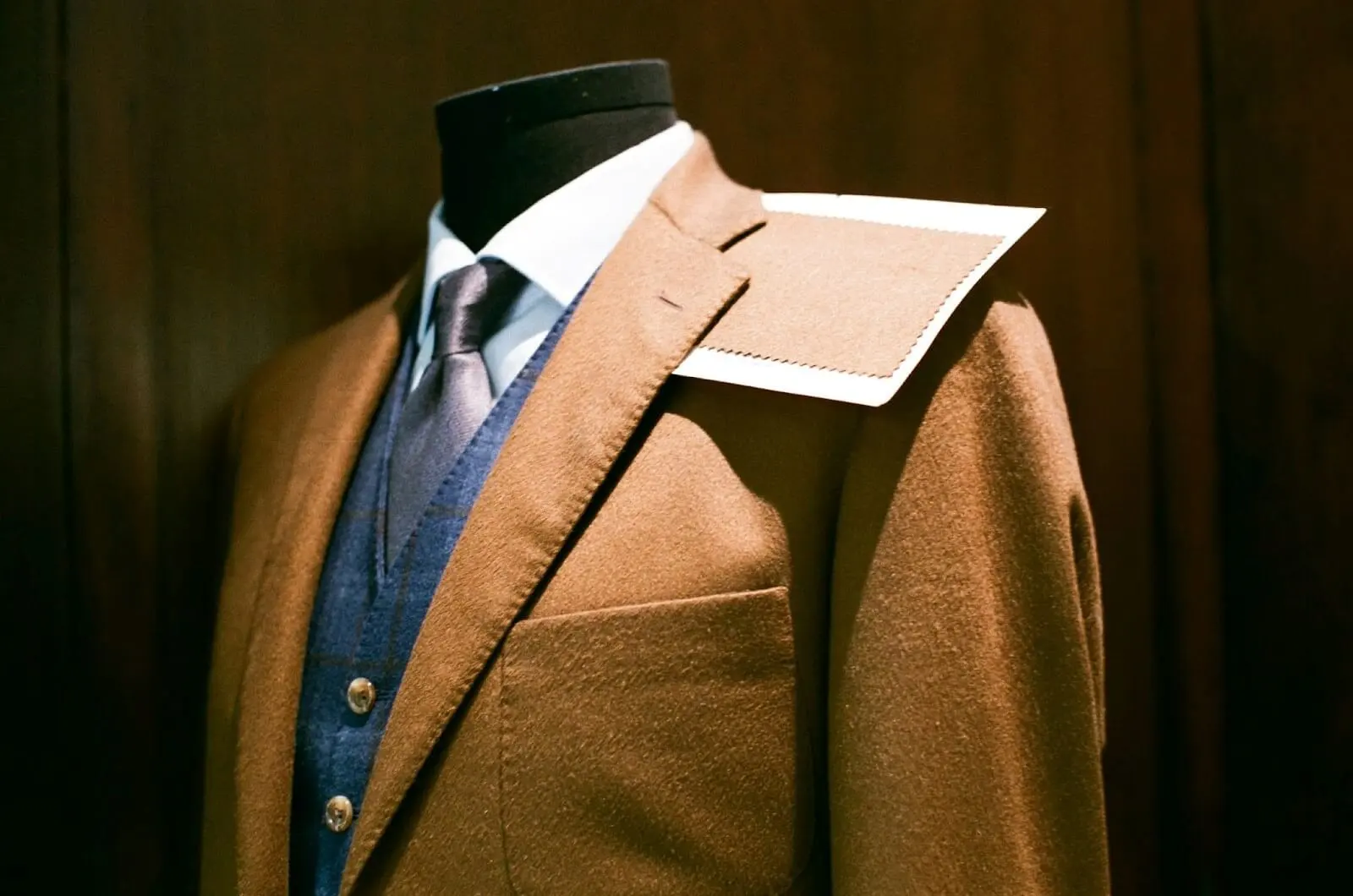 Custom Suit Care: Tips for Maintaining Bespoke Apparel
Custom Suit Care: Tips for Maintaining Bespoke ApparelBespoke suits add value to your personality. Paying a premium for a fine-tailored suit is always worth it. But how do you keep the suit in perfect shape? Only proper custom suit maintenance and the right fabric care can help. Custom suit care is beyond cleaning and washing. It's about the details of storing and wearing the suit.
Preserving the fabric and luster in the colors is an art. The elegance of a made to measure suit makes you stand out in the crowd. When wearing the suit to special occasions it must always shine as brand new. Read this blog to learn the best practices of custom suit maintenance.
Why Proper Suit Care Matters
Bespoke apparel is expensive and needs care for extended life. You wouldn't want a well-tailored suit to wear quickly. Maintaining the sheen and luster in custom-suit fabric requires upkeep. With proper care, your suit will stay in perfect shape and complement your personality. So, every time you dress up the suit looks pristine.
Although custom suits are tailored to your body shape, they may deform over time. Wrinkles and uneven shoulder pads are common. Proper suit care ensures a precise fit for a long time. What's even great about maintaining a custom suit? It saves costs, you would not need to spend on new suits every then and now.
Proper Storage
The first step in upkeeping a bespoke suit is proper storage. Custom suits need special treatment, unlike casual clothing that you can throw directly into the closet. When dealing with a suit, you need a hanger, a garment bag, and a right closet. The environmental conditions, especially humidity levels and sunlight are also crucial considerations.
Step 1: Hang and Pack
Choose a wooden hanger with adequate shoulder length. Hang the suit and ensure it doesn’t overlap or sag. Use a breathable suit cover to pack the suit.
Step 2: Room to Breathe
Always try to hang the suit instead of folding it. Find a vertical closet of the proper size for storage. Ensure there's airflow to keep the space dry and humidity-free.
Step 3: Steam to Freshen Up
Take out the suit and use steam to remove wrinkles occasionally. It will also kill bacteria and eliminate stagnant smells.
Cleaning
Cleaning is an essential part of custom suit maintenance. What’s your cleaning routine to keep the suit looking sharp? Here are the three best ways to clean and maintain a bespoke suit.
Dry Cleaning
Always prefer dry cleaning for custom suits because wet cleaning damages fabric. After every 5-6 wears consider sending your suit for dry clean. It will help maintain hygiene and preserve the fabric.
Spot Cleaning
If you get a stain, use spot cleaning immediately. Don't let the stain immerse in the fabric and leave a permanent mark. Moreover, dry cleaning for small spots is not recommended. Overdry cleaning is harmful for bespoke suits. Some mild detergent and a wet cloth are enough to remove small stains.
Odor Management
After every wear, some odors may develop in the suit. Air out the suit by hanging it in a dry place with adequate airflow. Ensure the suit storage area is also dry to prevent mold odors. Use cedar chips in the storage area if you feel humidity. Furthermore, steaming will remove mild odors.
Brushing, Steaming, and Ironing
What’s your secret to standing out in style? Dressing up in the perfect bespoke suit, right? When preparing the suit for a night out or a day meeting, brush, steam, and iron! It’ll help maintain the suit’s pristine appearance.
Brushing the suit removes dust and dirt build-up. Steaming is essential for eliminating wrinkles and giving that fresh look to the suit. Ironing is for crisp creases and a more defined appearance, especially at the collars and lapels.
Brushing, steaming, and ironing are three steps that you must follow before putting on your suit. Following these steps, you won't do much damage to your suit. Gentle brushing cleans it up, steaming is not harsh on fabric, and essential ironing is good for clean lines.
Suit Rotation
Wearing a bespoke suit consecutively for days is death to its charm. Suit rotation is critical for custom suit care. Always rotate the suits to prevent excessive wear and tear. Your suit also needs some time to recover from a hectic day. Rotating suits not only maintain quality but also extend life.
Do you have multiple bespoke suits rocking in your closet? Prepare a suit rotation strategy for proper custom suit care. Select a few of the best ones when you have a week-long plan. Let one suit rest for at least a whole day before wearing it again. Plus, avoid stacking suits in the travel bag, they can wrinkle and deform.
Fabric Care Tips
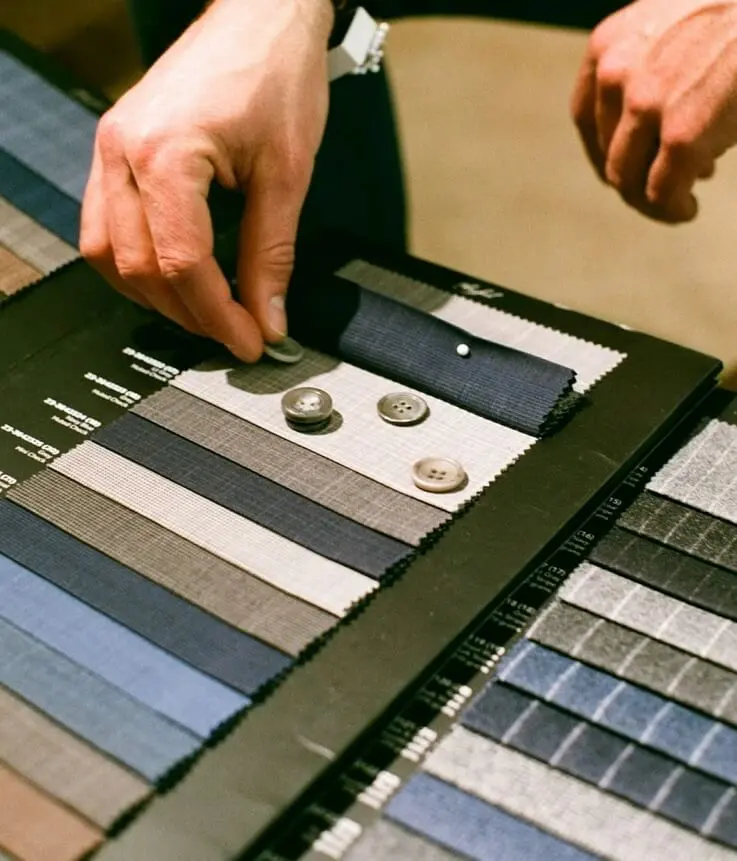
Suit fabrics are delicate and need decent care. You must know the fabric type for proper bespoke apparel maintenance. Dealing with wool can be a lot different from blended fabrics or cotton.
For example, wool fabric deforms more quickly than other fabrics. Always hang the wool suits properly in a breathable storage. Give them a gentle brush for cleaning and removing lint. Try not to iron the wool suits instead use steam. The same goes for linen suits because they are light and wrinkle easily.
The cotton fabric needs a slightly different treatment. Medium to low heat Ironing is preferred to remove wrinkles from cotton suits. Store cotton suits properly because they're prone to deformity. Blended fabrics are common, especially wool polyester and wool silk. Use the labels to get proper care instructions. Each blend needs a different care treatment.
Maintaining Suit Structure
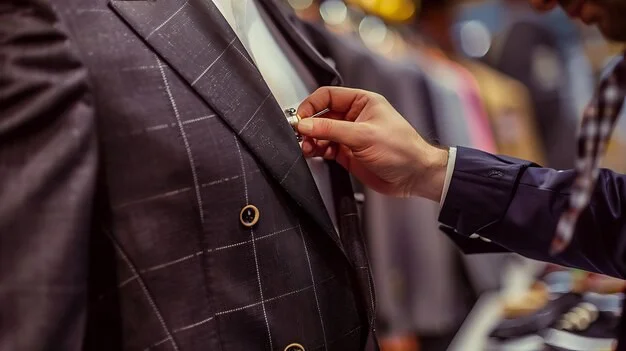
A crisp suit with well-defined creases enhances a professional look. Maintaining the suit structure is much needed for a neat look. Here's how it's done:
Shoulders and Lapels
Use wide wooden hangers to maintain the shoulder structure. Avoid wire hangers because they don’t provide adequate support and cause deformity. With proper hanging, the lapels also stay in shape. Additionally, use steaming to retain the natural suit structure. If you think ironing is necessary, go for medium heat and use ironing cloth.
Keeping the Trousers Crisp
Use steaming and ironing to keep the trousers crisp. Iron creases and steam to remove the wrinkles. Hang the trousers with clips from the waistband to maintain the structure. Folding trousers along the crease is also a good option. The trousers get wrinkles around the knees or the seat. Your sitting posture also affects their structure.
Common Suit Issues
What suit issues do you face most often? To your surprise, some suit issues are common that happen with everyone. Let's see if they happen to you and suggest effective solutions.
1. Pilling
Have you seen those tiny buds forming around the suit? That’s fabric strands breaking and forming tiny balls. The reason for piling in fabric is excessive wear. Rotating suits or using fabric shavers can help avoid piling.
2. Loose Buttons and Threads
Buttons get loose over time and small threads untangle Check the buttons before you put on the suit. If you notice any loosening get them fixed. Suits coming from dry cleaners also have loose buttons. Proper inspection will help avoid any alter issues.
3. Fraying Edges
Fraying happens in sub-standard fabrics or when suits are overused. Proper bespoke apparel maintenance can help prevent fraying. Use adequate storage, avoid excessive use, and choose steaming over ironing.
Seasonal Suit Care
Custom suit care doesn’t depend much on seasons. It’s a continuous process done throughout the year. Avoiding direct sunlight is equally important for suits during summers and winters. However, humidity levels may increase during spring, especially when it's raining. Ensure proper ventilation to prevent odor issues and fabric damage.
Take care of your suits year long. Put in extra effort if seasonal variations affect the suit's quality or longevity. The more you care about your suits, the more they'll help you make a style statement.
The Importance of High-Quality Custom Suits
Bespoke suits elevate one’s personality to the next level. Walking in a high-quality custom suit makes you the center of attraction. Beyond style and looks, the custom suits also offer ultimate comfort. It's an investment worth every penny!
Looking for perfectly tailored suits? Kutetailor offers top-quality custom suits. Choose from a variety of imported fabrics. Match the suite with your style to leave an impression. Kutetailor believes in quality and customization, it goes the extra mile to bring the best fabrics from across the world. High-class artisans then use state-of-the-art machinery to stitch masterpieces.
FAQ
How long will a custom suit last?
A custom suit can last between 5-10 years with proper care. The lifespan depends on fabric and stitch quality.
What are the benefits of custom-made suits?
Custom suits are just made right for you. They offer the perfect fit that helps you stand out. Besides that, custom suits are high-quality, long-lasting, and comfortable.
Why are custom suits expensive?
Custom suits are not expensive but value for money. The fabric quality is the best in custom suits. Skilled craftsmanship, perfect fit, and longevity make custom suits expensive.
MORE 2024-09-24 -
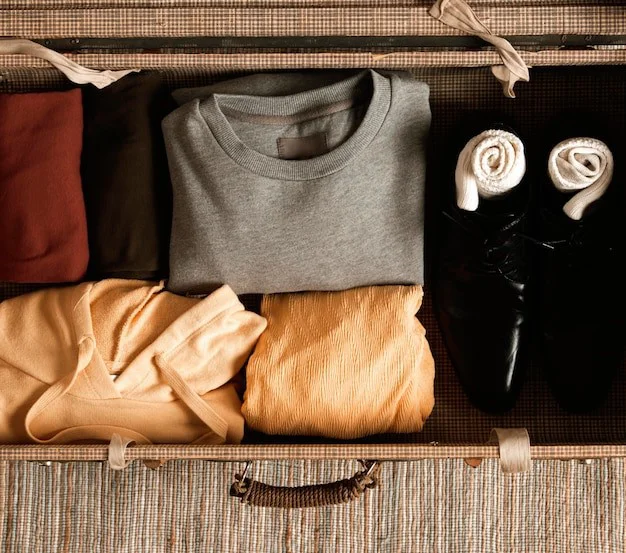 Best Custom Apparel Suppliers for Startups
Best Custom Apparel Suppliers for StartupsA top-notch custom clothing supplier could be the difference between your business flourishing or floundering. In the diverse world of custom apparel—be it luxury, corporate, or specialized—quality and innovation are key. Success in this field relies on quality, innovation, and personalization. An experienced manufacturer can give life to your startup, helping your brand stand out in a competitive market.
With the right supplier, production becomes more efficient, lowering costs and enhancing your brand's reputation. This post will help you choose the best manufacturer to improve your production and strengthen your business.
How to Choose the Best Custom Apparel Supplier
With so many custom apparel suppliers out there, how do you choose the best one? Let's break down the essential things to consider for a perfect partnership.
1. Quality Products
Custom clothing requires high-quality fabric. Choose suppliers that have durable fabrics and a reliable method of production. For example, a supplier of premium cotton or a moisture-wicking polyester guarantees that the garments are durable and will retain their look. Ask if they offer samples to assess the fabric and print quality before bulk purchase.
2. Customization Options
One of the important criteria is the ability of a supplier to adapt to the needs of the customer. Look for those who use multiple printing methods, including screen printing, embroidery, and heat transfer. Make sure that they can handle various design densities and shades. A supplier should also provide choices for the labels and tags to be used in the production process to match the company's identity.
3. Pricing Structures
Compare the prices of the different suppliers, not only the unit price but also the extra charges associated with the suppliers. A few of the wholesale custom apparel suppliers may give special offers, such as discounted prices for a certain quantity of products or a wholesale purchase. Learn how they bill their clients if there are any additional costs, such as setup or artwork modification fees.

4. Lead Times
Timely delivery makes a partnership between you and the supplier iron-clad. Suppliers should give specific lead time for the production and delivery of the product. For instance, you may require apparel for an event; a supplier who delivers products within the shortest time possible will help you get your products in time. Inquire about the turnaround time when placing an order if they have an option for rush services.
5. MOQs (Minimum Order Quantities)
As a startup, you have to be certain about your requirements. This is mainly because you will not have a large demand in the initial stages. If your minimum order quantity is higher than it should be, you will just be stocking up on inventory, and your inventory will not be moving out of your warehouses. Suppliers with low MOQs are ideal for smaller businesses or those testing new designs. This is why, when negotiating your partnership with your supplier, be very sure to get the right minimum order quantity.
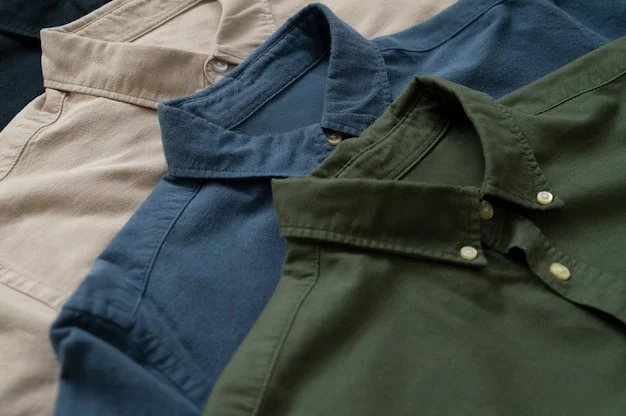
6. Innovation
Innovation in apparel can set your brand apart. Look for suppliers that embrace new technologies and trends, such as sustainable fabrics or advanced printing techniques. A supplier focused on innovation can offer unique products and keep your designs fresh and competitive in the market.
Tips for Startups to Scale with the Supplier
Starting small is great, but how do you grow? Building the right supplier relationships can be the secret sauce. Learn how to scale your startup effectively by working smarter with suppliers.
Build Strong Relationships with the Supplier
Building trust and communication, startups guarantee the quality of products and their timely delivery. Startups plan well if they engage with suppliers frequently so that they know their strengths and weaknesses. Setting up weekly meetings or check-ins to resolve any problems that may arise and foster a positive team culture. Also, the practice of giving constructive feedback and criticism helps in enhancing the quality of the work and the partnership.
Adjusting to Market Changes with Supplier Support
The fact that you are able to adapt to the changes in the market is what enables your startup to grow. Your supplier can help by providing information regarding the current trends and aid in changing the product mix. For example, if the market trend is shifting to wearing eco-friendly apparel, a responsive supplier can easily shift to sustainable materials. Being flexible with the help of your supplier can help your startup remain competitive and relevant.
Exploring New Product Lines with Supplier Collaboration
Working with your supplier on new product lines is the way to go. Discussing your ideas with them leads to better product development. For instance, if you want to introduce a new range of activewear, your supplier's knowledge can help you decide on the materials and design of the clothing line. Thus, the concept of collaboration can help expand the range of your products and satisfy new market demands.
How to Build a Strong Relationship with Your Supplier
Strong supplier relationships are the lifeblood of smooth operations and success. Are you doing enough to nurture them? Uncover how to foster reliability, communication, and trust for a winning collaboration.
Ongoing Communication

To have a good relationship with your supplier is synonymous with having good communication. Schedule regular meetings to review the progress, changes and any issues that may arise. For example, a monthly meeting can serve to discuss production schedules and the changes that may be required. Hence, constant communication helps both parties to understand each other's expectations in the event that any complications arise.
Proactive Issue Management
Anticipate potential problems before getting worse. It is better to fix a problem as soon as you identify it rather than let it compound and become worse. For instance, if there is a delay in the production process, then inform the supplier immediately and consider the possible course of action. This ensures that you avoid any hitches, showing your supplier that you are committed to a smooth process.
Quick Feedback
Offer your feedback on the products and services in a timely and constructive manner. Quality and delivery should be discussed after every order so that you can be in a position to know what went wrong or what you need to adjust. Feedback can be given immediately, and this enables your supplier to make changes where necessary to meet your requirements. For instance, if you find out that the colors of a batch do not meet the color standards that you want, informing your supplier about this makes them change their ways of producing the next batch.
Making the Right Choice for Long-Term Success
It is not simply about the short-term payoff but also about the long-term development. It means that by choosing wisely today, you create a foundation for a better tomorrow. Every decision made in business or personal life contributes towards the path being taken. Consider options, evaluate the pros and cons, and think about how they will fit into your plans. One of the considerations to make is Kutetailor.
Kutetailor stands out as a professional provider of high-quality custom men's wear and women’s. Our digital platform, made to measure suits online, supports startups from ordering to business management. By offering seamless solutions and top-notch apparel, Kutetailor ensures that you're well-equipped to make your business thrive. With our help, you can confidently build a strong brand and achieve lasting success.
FAQs
Q: What technical certifications should I look for in a custom apparel supplier?
A: Look for suppliers who have certifications like ISO 9001 or OEKO-TEX. Such certifications refer to quality management and environmentally friendly processes. They make sure that the supplier is up to the standard in the production of quality and safe products. By confirming these certifications, you can be sure that your apparel will be made with the right standards.
Q: What are the key performance indicators (KPIs) to monitor when working with a supplier?
A: Key Performance Indicators are the on-time delivery rates, accuracy of orders, quality control measures, and customer service responses. The above KPIs ensure monitoring of the supplier's compliance with the set timelines, quality, and communication.
Q: What advanced technology should startups look for in custom apparel suppliers?
A: Startups should seek suppliers who embrace advanced technology in operations, such as digital printing, laser cutting, and automatic embroidery machines. This is due to the fact that advanced technology leads to accurate and effective production, which results in high-quality customization and consistent results.
MORE 2024-09-13 -
 Key Custom Apparel Trends for 2024
Key Custom Apparel Trends for 2024The fashion industry of custom apparel is evolving faster than ever. In 2024, it is experiencing tremendous changes with technology integration, sustainability, and personal expression.
Whether you are a business looking to make a statement or an individual seeking to highlight your personality and unique style, custom clothing is the answer. The rising trend of this year is personalization with fashionable green materials to cutting-edge digital designs. This article will explore the main trends in custom apparel that will inspire your customized wardrobes or brands in 2024.
Eco-Friendly Materials
Due to rising consumer awareness about the environmental impact of fast fashion, the custom apparel industry is seeing a significant trend of using eco-friendly materials in the supply chain and manufacturing.
Organic cotton, bamboo, and recycled polyester are becoming popular due to their exceptional quality and environmental benefits. These materials are soft and breathable, having a positive impact on the environment by reducing pollution and energy consumption.
These materials not only cater to customers inclined towards green strategies but also help you position your brand as socially responsible. Emphasizing sustainability will give you a differentiation edge over others by helping you create a unique product that will appeal to eco-friendly customers and inspire loyalty among them.
Sustainable Practices
Zero-Waste Design
Zero-waste design is a revolutionary approach to fashion that minimizes fabric waste during production. By using precise patterns and cutting techniques, designers ensure that every inch of fabric is utilized, reducing the industry’s overall waste. This practice cuts down on material costs and lessens the environmental footprint of clothing production. Zero-waste design appeals to eco-conscious consumers who want stylish pieces without contributing to textile waste, making it a key trend in 2024's custom apparel landscape.
Zero waste design is a revolutionary fashion approach that minimizes fabric waste during production. Adopting cutting and sewing techniques with precise patterns decreases the waste aspect in the industry since every piece of fabric is used. This practice cuts down on material costs and lessens the environmental footprint of clothing production. Zero waste design targets consumers who are environmentally responsible and wear fashionable clothes without adding to the textile waste, making it a key trend in 2024's custom apparel landscape.
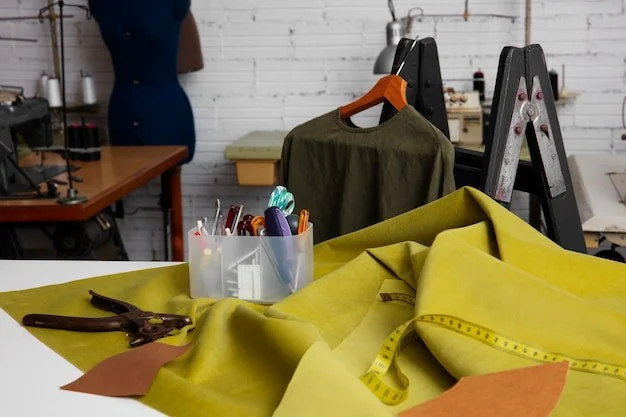
Ethical Production
Ethical production is quickly becoming a growing trend within the custom apparel market due to consumers who are becoming more careful about their purchases and how they will affect society as well. More brands are committing to transparency, ensuring their clothes are made under fair labor conditions, with safe working environments and fair wages. This trend goes beyond sustainability, addressing the human side of fashion production.
Ethical production is crucial in responding to growing consumer demand for clothing that is not only environmentally friendly but also socially responsible. Brands that emphasize ethical production build trust and loyalty with customers, who increasingly seek products that reflect their values of sustainability and fairness.
Advanced Customization
Hyper-Personalization Demand
For consumers more inclined towards clothing that reflects their unique identity, hyper-personalization is the answer. In addition to the basic parameters of color or size, customers also demand that each garment be constructed from scratch with bespoke prints, fittings, and styles for the individual. This is because people want to express themselves, and their clothing helps in this by having a story, a reason, or a purpose. With the availability of these hyper-personalization features, the growing demand for such a trend can be fulfilled by the brands by providing clothes that are made for each individual’s specific likes and wants.
Advanced Technologies
High-level technologies such as artificial intelligence, 3D printing, and digital designing are changing how custom men’s wear and custom women’s clothing are designed. For example, AI-powered platforms recommend personalized styles by analyzing consumer data, while 3D printing offers features and intricate designs that have been unimaginable before. These technologies make the production process faster and more efficient, allowing the companies to make and sell a variety of highly manufactured clothing pieces. With the integration of advanced tech, custom apparel is becoming more accessible and precise, meeting the demands of modern consumers for unique, tailored clothing.
Interactive Customization
With the interactive customization tools, you can become a co-creator in the design process. Tools for interactive customization are transforming the relationship between customers and brands by making customers into co-designers. Virtual platforms allow customers to change anything from fabric selection to design components while viewing the changes in real time through interaction. Such flexibility can be achieved via Augmented Reality (AR) apps or 3D design tools, which allow the consumers to see how their custom creations will look prior to being made. It is this element of involvement that improves the brand-consumer relationship because it allows the customers greater input in the final product.
Athleisure and Performance Wear
Athleisure is simply a fashionable style of sporty clothing and everyday casual wear that provides stylish yet comfortable outfits for physical activities. Performance wear is designed specifically to enhance athletic performance.
The Popularity of Athleisure
Unsurprisingly, athleisure is becoming extremely popular due to its combination of style and functionality, which meets today's dynamic and active lifestyles. Consumers are increasingly seeking versatile clothing that can transition from workouts to casual outings. And this trend of athleisure truly meets the demand of consumers to combine sportswear with everyday fashion.
Manufacturers of custom garments are capitalizing by introducing specialized athleisure pieces. In these, clients design their activewear from the ordinary to the very fit they deem necessary, making their activewear not only functional but also uniquely stylish.
Performance Fabrics
Performance fabrics are the main reason for the popularity of athleisure. The moisture-wicking fabrics allow working out on demanding physical tasks without getting sweaty, while UV protection fabrics protect the skin from sunburns. Other advancements like temperature-regulating textiles adapt to body heat while still providing comfort to the user.
Such high-tech fabrics increase the utility of performance clothing and make it more comfortable and functional to wear. The Activewear approach in which performance fabrics are utilized by custom apparel brands is just a perfect combination of innovation and audience demand for active all-day wear.
Gender-Neutral and Inclusive Apparel
Unisex Designs
Unisex designs are revolutionizing fashion by leaving behind the stereotypes of ‘Men’s Wear’ and ‘Women’s Wear.’ With a rise in demand for inclusivity, unisex as a fashion trend is a great way to cater to diverse preferences, making fashion more accessible and adaptable for everyone.
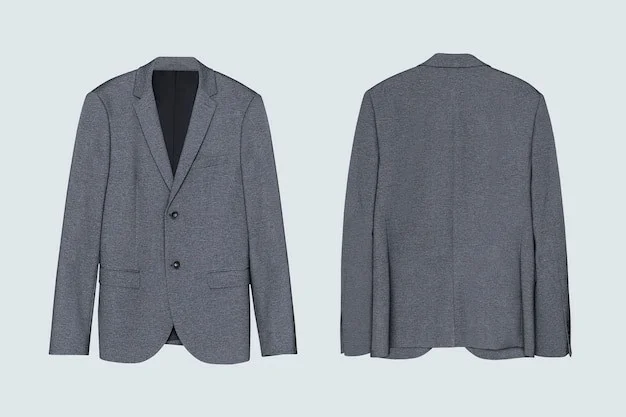
Inclusive Sizing and Fit
Today’s fashion is all-body-inclusive, so there is a need for sizing and fit that caters to all body types. Custom apparel brands are now going beyond the standard size range and offering extended sizes fitting many more shapes and proportions. This shift not only supports body positivity practices but guarantees that everybody will be able to find appropriate clothing tailored according to their specific measurements. So that everybody can feel confident regardless of their body type.
Identity Expression Through Custom Apparel
From gender-neutral styles to designs that celebrate culture, beliefs, or personal values, custom apparel allows individuals to express their unique identity. With more customization options, people can create pieces that resonate with their sense of self, making fashion a powerful tool for self-expression and representation.
Retro-Inspired Designs
Retro-inspired designs are making a strong comeback in custom apparel, blending nostalgia with modern trends. Drawing inspiration from iconic fashion eras like the 70s, 80s, and 90s, these designs feature bold patterns, vintage color schemes, and classic silhouettes.
Neon colors, oversized sit patterns like tie-dye, and old-fashioned styles with modern graphics in custom dresses allow consumers to revisit timeless styles while adding a personal twist. This trend appeals to those who appreciate the aesthetics of past decades and want to incorporate them into their current wardrobe, creating a blend of old and new.
Minimalism
Minimalism has become a dominant trend in fashion, reflecting a shift towards simplicity, intentionality, and sustainability.
Minimalist Aesthetics
Custom apparel focuses on minimalist aesthetics with clean lines and neutral tones. This trend embraces the "less is more" philosophy with understated designs that prioritize functionality and timeless elegance. Minimalist dressing tends to focus on single colors, classic style, and little or no embellishments, thereby making it easy to mix and change styles. This aesthetic appeals to consumers for its sophisticated yet effortless look, perfect for everyday wear or special occasions.
Sustainable Minimalism
As the term suggests, sustainable minimalism involves the principles of minimalism as well as environmentally sound principles. By emphasizing quality rather than quantity, this trend fosters the production of long-lasting and classic products made of eco-friendly materials. Consumers who embrace sustainable minimalism prefer fewer, higher-quality items that reduce waste and environmental impact. This approach aligns with the growing demand for conscious consumption, offering a blend of simplicity and responsibility in fashion choices.
Final Thoughts
In 2024, the custom apparel industry is being shaped by significant trends like sustainable practices, advanced customization, gender-neutral designs, and the rising popularity of athleisure. Hyper-personalization and performance fabrics are in demand, as customers are looking for both functional and fashionable clothing. There are unisex designs, inclusive designs clothes and identity-driven clothes that are all moving the world of fashion to be inclusive and more expressive but there are also minimalist and retro trends where timeless beauty is preferred.
The future of custom clothing involves more innovations in sustainable fabrics, personalization using technology, and ethical production on a higher level. As new products and markets emerge, the custom apparel industry will still focus on individuality, sustainability, and comfort.
For businesses looking to stay ahead of these trends, Kutetailor is a professional and experienced supplier of made-to-measure apparel. They closely monitor market trends and update their product offerings every two weeks, ensuring that clients receive the latest in fashion and innovation.
FAQ
1. How are sustainable fabrics influencing custom apparel in 2024?
In 2024, sustainable fabrics like organic cotton, bamboo, and recycled polyester are transforming custom apparel by offering eco-friendly options that appeal to environmentally-conscious consumers. These materials reduce waste, minimize environmental impact, and promote higher quality, positioning sustainability as a key factor in fashion choices and brand differentiation.
2. Why is gender-neutral fashion gaining popularity in custom apparel?
Gender-neutral fashion is gaining popularity in custom apparel due to its inclusivity and versatility. It breaks away from traditional gender norms, offering designs that appeal to a broader audience allowing individuals to express their style without being confined by gender-specific categories.
3. What is the significance of performance fabrics in 2024’s custom apparel trends?
In 2024, performance fabrics are a key trend in custom apparel, offering functionality and comfort for active lifestyles. Fabrics like moisture-wicking, UV-protective, and temperature-regulating materials enhance athletic and everyday wear by providing durability, breathability, and versatility. These fabrics meet the demand for practical, high-performance clothing in athleisure and beyond.
MORE 2024-09-11 -
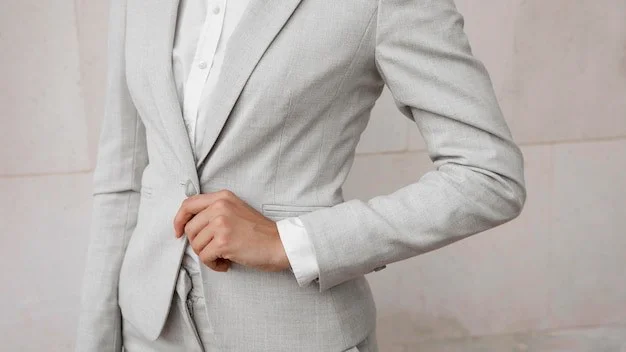 How Much Should Custom Suits Cost: A Pricing Guide
How Much Should Custom Suits Cost: A Pricing GuideMany people think of custom tailoring as quite an expensive hobby. It's a significant investment, often costing over $2,500. The question arises here: How much should a custom suit cost? Well, it depends on the choice of fabric and several other factors.
Custom suits are now in high demand because of their sharp tailoring and professional appearance. Whether for weddings or business, a well-tailored suit is essential. Many tailors will offer different budgets, but what about the fabrics, craftsmanship, customization, and all?
With our experience in custom tailoring, you will get professional insights into the market. Take advantage of this blog and learn the factors that contribute to a great suit.
How Much Should a Custom Suit Cost?
Custom clothing is about your tailor getting your measurements to stitch your suit. The most popular custom clothing known is made-to-measure. MTM clothing is a power source for online clothing manufacturers. The stores or manufacturers have a custom specialist to measure your suit in person. However, a custom specialist will guide one of your closest people to get your measurements for the online process.
A stylist will insert all your measurements into the software to generate the patterns or blocks for your suit.
Whether through in-person or made to measure suits online services, a well-made custom suit typically costs between $900 and $3,500. A basic quality suit will cost you from $800 to $1499, whereas a very good suit will range from $1999 to $2999. All women's and men's custom suit costs will differ according to patterns, style, and clothes fabric.
Key Factors Influencing the Cost of Custom Suits
Custom suits are way more intricate than ready-made ones. However, there are a lot of factors which make it preferable to others.
Quality Fabric Selection
The basic factor that influences custom-suit pricing is the selection of fabric. No matter the type of fabric you opt for, like Italian wool, silk, polyester, or linen, your fabric selection will affect the suit's quality and cost. If you opt for cashmere, tweed, wool, or silk, you have to pay for their texture and comfort, which brings you durability.
Kutetailor's fabrics bring you luxury as they are in touch with the best fabric suppliers. Sadly, not everyone can afford luxury fabric, so a broader range of market offers you multiple options like wool-polyester blends.
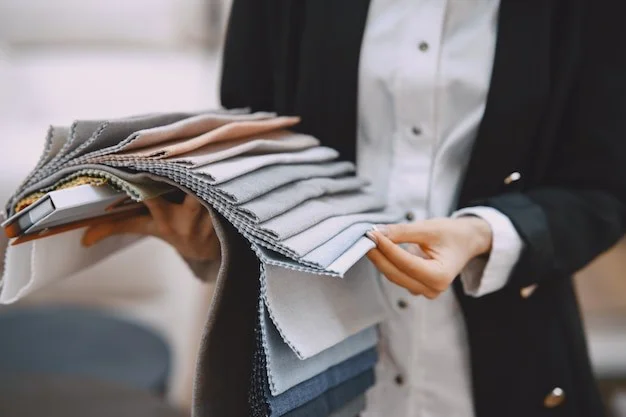
Level of Customization
Custom suits without customization are not possible. Basic customization will not cost you a high price tag as it includes fabric selection, style, and slight adjustments. On the other hand, intricate customization will cost you a lot. It includes pattern selection, stitching details, lining details, resources, time delivery, and much more.
Usually, manufacturers offer customization packages. It ranges from entry-level, mid-level, and premium packages. Each package comes with detailed customization and charges.
Labor and Craftsmanship
With fabric and customization, craftsmanship also affects the cost of custom suits. Professional tailors who stitch suits from scratch demand high labor, which ultimately increases the custom suit cost. There must be a balance between craftsmanship, affordability, and quality.
Production
Manufacturers play a crucial role in the pricing and quality of custom suits. Professional manufacturers cost high for their labor, resulting in quality and standard work. However, outsourcing production will reduce manufacturing costs. This benefit comes with quality loss and longer delivery time. Transparent communication with the tailor is essential to increase the trust between seller and buyer.
Extra Detailing
Custom suits require extra detailing as enhancers. The basic design of the suit will look good. However, extra detailing and work enhance the look and price. But you have a free hand to ask for extra details about your suit.
For example, you can go for enamel buttons instead of plastic ones. Handmade lapel buttonholes look good. Choose the artistic lining over the normal ones. Fine silk fabric is more expensive than a cotton lining.
Therefore, the cost of a custom suit cost is your budget and fabric selection. The more high-quality stuff you choose, the more you pay for the look.
Market Positioning and Pricing Strategy
For custom suit startups, market positioning is a brand image in public and any marketplace. You need to understand the market positioning before quoting the rates.

Understanding Your Market Position
Analyze your brand's end goal, whether it offers luxuries and aims towards accessibility of products. Your market position must reflect your pricing and target your audience. If you offer luxury positioning, your customers look forward to premium quality products, exclusive details, and high-end craftsmanship.
Meanwhile, mid-range positioning offers quality products with flexible pricing. It's a game of balancing the best one in the market with competitive rates. The budget positioning brand will focus on affordability. They target the MTM suits where there's not much customization and satisfy the customer needs at affordable prices.
Developing a Pricing Strategy
Once you figure out your brand's market position, it's time to create your pricing strategy. You can create one of these pricing strategies for your brand.
Premium pricing requires higher quality products, personalized service, intricate detailing, and exclusive designs. It creates the exclusivity of the brand for customers.
Meanwhile, competitive pricing makes you run the race while charging the market prices. It's best for mid-range brands that offer something additional while focusing on affordability. It can be anything: free delivery, active customer support, professional guidance, etc.
Penetration pricing is for brands that enter a new market or startups. So, to stay out, they offer low prices like discounts or buy-get-one offers. The key point is to attract customers and build a brand.
In contrast, Value-based pricing is for brands with no price tags and flexible rates. Through this, they'll know what and how much customers will pay more.
Once you figure out your brand's market positioning and pricing strategy, it's time to communicate them to your partners.
Tips for Maximizing Profits
Being a MTM clothing brand, it's essential to maximize the profit of custom suits. We offer a few tips to help you maximize profit in a tailor's business.
Sourcing Efficiently
Trustable suppliers are essential if any brand wants to maximize its custom clothing business. To offer consistent quality, manufacturers will need quality material at competitive prices with no extra cost.
Build strong relationships with suppliers for exclusive material supply and communicate regularly. Bulk purchases the stock for additional discounts. Negotiate the prices and pay upfront to build trust. Head to multiple suppliers to avoid inconveniences and have the needed stock anytime.
Streamlining Operations
Once you have multiple suppliers, it's time to streamline your operations. It will increase efficiency while minimizing the initial cost with the benefit of high profit. Utilizing digital platforms is the easiest way to achieve this goal. Establishing an online order system will facilitate transparent communication for your customers, vendors, and businesses. Automate the order process system to reduce errors and suit real-time progress.
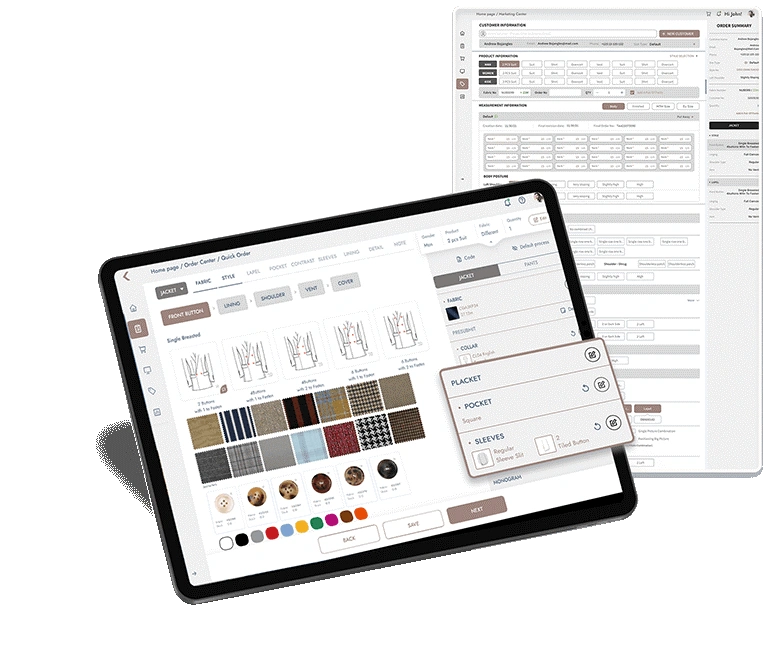
Keep track of material usage, stock levels, and timely supply reorders by installing inventory management software. This way, the company won't face overstocking and stockouts. Automate the process of customer care and invoices to save time and resources. It'll help you focus on productivity and profits.
Cooperating with a Reliable Manufacturer
A reliable manufacturer is as important for the MTM clothing brand as the supplier. Fortunately, Kutetailor brings the brand standard that meets clothing needs. We are a one-stop customization platform with R&D designers who create trendy design suits for every season.
The custom suits will meet all legal standards like GB/T 2664-2017 and FZ/T 81007-2012. The team of professional tailors and imported machinery ensure the high quality of custom suits. Kutetailor offers MTO and MTM clothing. Whether the requirements for customization in men's and women's clothing or the need for formal, smart, and casual clothing, we are just one click away.
Kutetailor has also done all the legwork to offer traditional Chassidish wear. We are connected with reputable design startups, business brands, and distributors to serve high-level craftsmanship.
FAQs
Are the bespoke suits and MTM suits the same?
Bespoke and made-to-measure (MTM) suits differ primarily in their construction process. Custom suits have exclusive designs that get stitching and cutting from scratch. Meanwhile, tailored suits have cutting and stitching with the client's body type in the existing pattern or design.
How much should a custom-made suit cost?
Nobody can quote the exact amount of custom-made suits. However, it can range from $900- $3500, depending on your choice of fabric, pattern, styling and customization. Sometimes, the manufacturers' location also varies the cost of custom-made suits.
What's the reason behind the high cost of custom suits?
Manufacturing and craftsmanship cost the major portion of custom suits. It requires expertise in designing, hand stitching, and intricate detailing, which costs the suit more than the machine made.
How much should a men's custom suit cost?
A men's suit has many variables to consider when pricing. A nice fit tailor men's custom suit will cost you $1500, including nice fabric, intricate detailing, and extras.
Which fabric makes the suit more expensive?
Polyester and rayon are cheap fabrics that blend cotton and wool. They make the suit cheap and give it a shiny look. High-end suits often feature fabrics like super 150s wool, cashmere, or silk blends, which cost significantly more than polyester or rayon blends.
MORE 2024-08-30 -
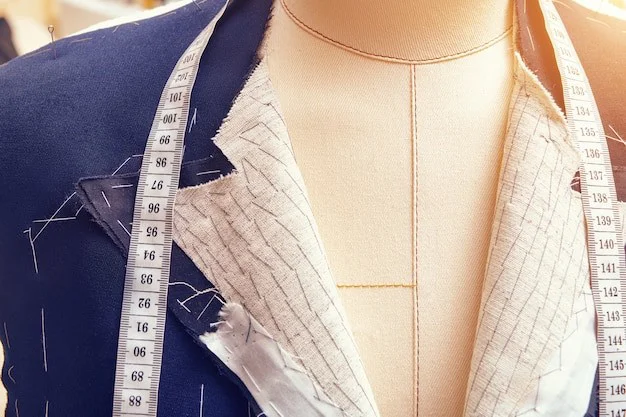 Traditional and Online Ways for Measuring Custom Suit Jackets
Traditional and Online Ways for Measuring Custom Suit JacketsEvery stitch and detail of a custom suit jacket perfectly reflects your body curves. But this level of achievement comes with accurate measurement. And no one wants to spoil their look by wearing a loose and baggy suit or tuxedo. Here comes the moment of realization of how to measure for a suit jacket. Well, if you opt for the tailor, it will be an in-person job. If you want to buy online, you will have to use online measuring apps.
Today's digital world is evolving with every day. It combines traditional measuring methods with online apps to make their dream a reality. Now, you can get your suit measurements without leaving the house. Innovative measuring apps and 3D technology are now a reality. But does this simplicity of made to measure suits online result in an ideal fit?
Traditional methods have skilled tailors and online methods reshape custom tailoring. From basics to how to measure a man for a suit jacket, we have got you covered.
Traditional Measuring Techniques for Custom Suit Jackets
For centuries, traditional measuring ways have been used for custom suit jackets. Professional and skilled tailors measure the person's body and utilize their hands-on skills for a personalized fit. For you, Kutetailor has 20+ imported machines that manufacture custom suit jackets. It's better to head to a professional tailor for measurement. But if you want to do it on your own, learn how to measure a suit jacket for size.
Essential Measurements for a Custom Suit Jacket
- Chest - Snug the measuring tape at the fullest area of the chest, which lies around the lines of the nipples. Take the measurement, ensuring the tape is at a level from front and back.
- Waist - Measure the narrowest part of the waist, a few inches over your navel. Leave room for breathing.
- Hip - Measure the broadest area of the hip, ensuring the tape is in line with the floor.
- Shoulder Width - Put the tape on one shoulder's back and measure it to another shoulder's endpoint.
- Sleeve Length - Stretch your arm a little to measure the starting point of the shoulder bone to the wrist.
- Arm Length - Extend the arm at an angle of 90, measuring from shoulder point to elbow's tip.
- Back Length - Measure the distance between the base of the neck and the pant's waistline.
- Jacket Length - First, choose the preference for a long or short jacket length. Measure the distance between the base of the neck to the point of the thigh as your desired length.
- Biceps - Measure the broadest portion of the upper arm, usually the center part of the elbow and shoulder.
- Wrist Length - Snug the tape around the wrist and measure the length.
A million-dollar advice for accurate measurements is to ensure the correct and straight posture of the client. Also, ensure the measuring tape is not too tight and confirm measurement twice for accuracy.
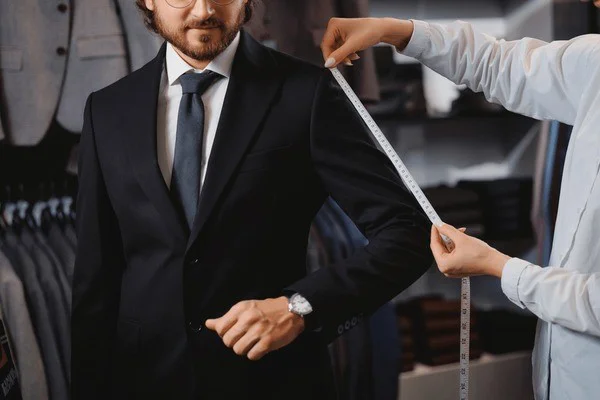
Common Mistakes to Avoid
While measuring the custom suit jacket for size, the tailor or person recording the measurement makes a few mistakes. We gather that list of mistakes you should consider during the body's measurement.
- Inaccurate Tape Placement - Sometimes, the tailor places the measuring tape too tight or loose, leading to short or lengthy measurements. Ensure the tape is snug and not tight during the measurements.
- Incorrect Posture - Usually, the client's posture is not straight, which causes the wrong measurements. Poor posture, puffing out the chest, and bending structure will cause loose or tight final results.
- Rushing the Process - Hand-based measurements are very time-consuming. So, many tailors rush over the process to wind up the measurements quickly. Ensure that every measurement is taken by the tailor and in a calm way. Confirm measurements twice.
Innovative Online Measuring Methods for Custom Suit Jackets
Many online measuring methods are popular in the market, which makes custom-suit jacket measurement easy. Here, we will discuss how to measure a man for a suit jacket online.
Online Measuring Tools
- Mobile Apps - Many companies provide their clients with mobile apps that help them with measurements. The apps offer interactive elements, tutorials, and detailed guides.
- Camera-Based Apps - Apps also come with smart cameras. The camera measures the body dimensions once you pose the way it asks. Your pictures and measurements will be taken from multiple angles. For example, Choozr takes your body dimensions from multiple angles.
- Digital Templates - very few apps offer digital templates for client guides. The template shows where and how to put the measuring tapes on your body for measurements.
- 3D Body Scanners - Many companies offer 3D body scanners that measure your body from multiple dimensions. It has advanced scanners installed that measure each length very precisely. 3DLOOK is an app that uses AI technology for body measurements.

Reliability of Online Methods
Most of the apps that cover different body dimensions are reliable. Many apps come with real-time feedback and advanced features that record accurate lengths. Apps provide interactive guides that help the user record the dimensions more accurately. However, camera-based apps might affect the results due to light and camera-resolution factors. Mobiles with good camera quality give reliable results.
3D body scanning apps are exact and offer detailed guides. They have a digital body model in apps that capture accurate measurements. Meanwhile, the 3D scanners might fluctuate the results with client posting and other factors like calibration issues. Therefore, learn how to measure a suit jacket for size in depth for accurate results.
Integrating Traditional and Online Measuring Methods
Traditional measuring methods are time-consuming, so tailors are combining traditional and online methods of measurement. It helps them save time and gives accurate results that lead to a fitted suit jacket. Here's a guide on how to measure for a suit jacket using both ways.
Start taking measurements of the body using Online measurement tools. Download any app and read its step-by-step guide for recording dimensions. Follow the tutorial and record the major lengths, such as chest, waist, shoulder, and sleeve widths. Enter the data and wait for the draft fit result.
Now, head to the nearest tailor and let him verify your measurements. Your online data will be verified using the hands-on method of suit measurement. The tailor will make the necessary adjustments and create the initial piece for you. Try the garment and let the tailor know for final adjustments. You can ask your tailor for further customization and details in your suit jacket.
This process will let you build trust in the online apps whether they give accurate readings for a fitted custom suit jacket or not. Give your tailor and app feedback once they give you your desired results.
Future Trends in Measuring for Custom Suit Jackets
Advances in 3D Body Scanning
The field of 3D body scanning technology is upgrading day by day. It's going to break records of previous data and will offer precise readings of body measurements. They will produce digital images of the body wearing the fit with specific lengths and sizes. Such scanners are still one click away from download, and their easy access makes them more validated in this era.
AI Enhancement Tools
Measurements and predictions will take a drastic upgrade in measurements because of Artificial Intelligence. Within seconds, AI can interpret your body shape, size, and lengths, which you can further use for custom jackets and suits. The feedback and real-time editing features ensure that you can personalize the fitting and enhance the experience.
Wearable Measurement Devices
Custom suit measurements bring new technology into the market, which is wearable measurement devices. These devices will record your real-time data and measurements through the installation of advanced technology. Belts, sensors, or cloth-integrated devices can save your movements. It's one of the most convenient and comfortable ways of making the measurement of a custom suit jacket easy and precise.
Final Thoughts
Wearing a fitted custom suit jacket is essential if you're heading to any event. Kutetailor makes it easy for you as we offer an easy ordering system with traditional and online measuring systems. We provide fitted suits for men and women in high-quality fabric. The installation of 20+ machines will stitch your custom suit jackets and offer you LDP and DDP payments based on your preferences. Consult our skilled designers and tailors to construct the final results of your clothing.
FAQs
How do you measure the size of your suit jacket?
A fitted suit matters for a personality and impression. Every suit comes in a size that has a letter and number. The number indicates the chest size, whereas the letter indicates the jacket's overall length. This is how you measure a man's custom suit jacket size.
How can anyone measure himself through camera-based apps?
Camera-based apps come with video tutorials that will record your dimensions automatically. It would be best if you had a good camera resolution and lighting to record the accurate measurements for a custom suit.
How does a tailor take measurements, and how can I make a fitted suit for myself?
Professional tailors take your measurements of every small detail so that you will not face any inconvenience. With the proper measurements, you can create a fitted suit for yourself.
MORE 2024-08-28

